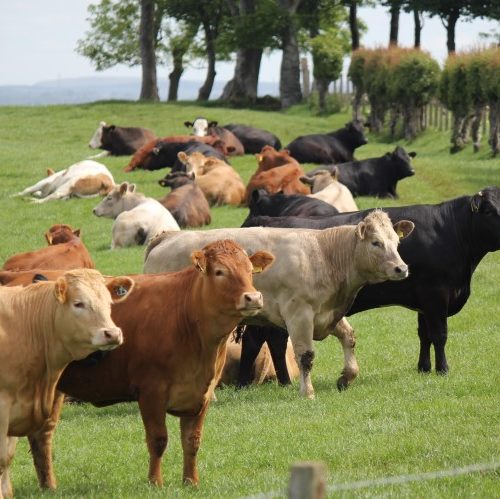Identifying And Treating Lameness In Cattle
5 June 2020There are two vital points to remember when tackling lameness in a group of cattle:
- Identify what the cause of lameness is
- Don’t assume all cases have the same cause
It is important to correctly identify the cause of lameness as the treatment for one cause may have no effect on another. Incorrect management is costly in terms of treatments, labour and prolonged lameness.
How Do I Identify The Cause of Lameness?
Remember that lameness is effectively a symptom of pain, and your job is to identify the source of that pain and alleviate it.
- Watch the animal from a distance as it is walking – is the lameness coming from the foot or the leg? There are often clues such as muscle wastage or a swollen joint if the pain originates in the leg
- Restrain in a crush and lift the foot for inspection
- only do this if you can in a safe manner and avoid injury to yourself or the animal
- Make sure the area is well lit
- Have some water and brush on hand to clean to foot
Lameness of the Upper Limb
Lameness originating in the leg can be caused by trauma (bone, muscle or nerve) or infection and is more likely to affect single animals. It is worthwhile discussing these cases with your vet to decide on the best course of action.
Lameness of the Foot
Foot lameness can be split into infectious and non-infectious causes which may occur together in the same animal and even in the same foot. Most vet practices run foot trimming courses which are useful for identification and treatment of common lesions as well as routine trimming techniques.

As a very brief summary:
Infectious
- Digital dermatitis produces raw areas of skin in the heel area and is caused by a type of bacteria found in slurry. Interestingly, experimental infection cannot be replicated on dry feet so slurry contamination of feet plays a huge part in controlling DD.
- Foul is also a skin infection but deeper layers of skin are penetrated, often between the cleats. Again, skin softened by wet underfoot conditions allows the bacteria entry. The coronary band may appear swollen in some cases.
Non Infectious
- White line disease is the separation of the white line – the junction between the hoof wall and sole. Dirt and stones can migrate up into the foot at this point which can lead to formation of an abscess.
- Solar ulcers are the exposure of the sensitive tissues within the foot on a weightbearing surface. Think of walking on a removed toenail! Internally, the bone within the foot can move and interrupt sole formation leading to formation of an ulcer. Nutrition, stress at calving and body condition can all influence this. Externally, prolonged standing on concrete and sharp turns in housing or handling facilities can also cause solar ulcers.
Treatments
Treatments may involve a combination of pain relief, corrective trimming, footbathing, antibiotics and changes in the environment. You should consult your vet for treatment protocols tailored to your herd. Unfortunately for lameness there is no magic injection to cure all, and it is vitally important to know what you are dealing with. Remember - the only thing that will fix a nail in the foot is pulling it out!
Megan Fergusson, megan.fergusson@sac.co.uk
Related Materials
This article is part of a series, you may also be interested in Nutritional Causes Focus On Laminitis and Practical Steps To Reduce Lameness In Finishing Cattle
Sign up to the FAS newsletter
Receive updates on news, events and publications from Scotland’s Farm Advisory Service
